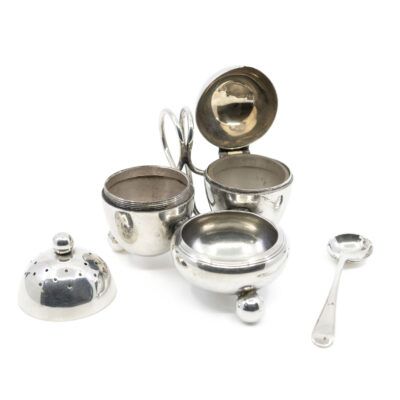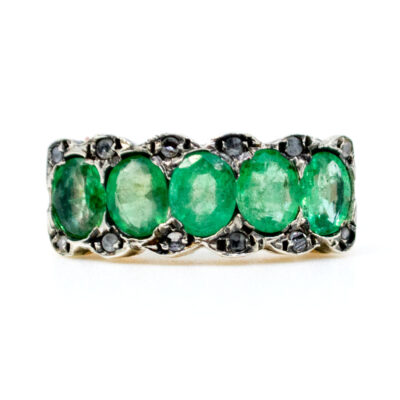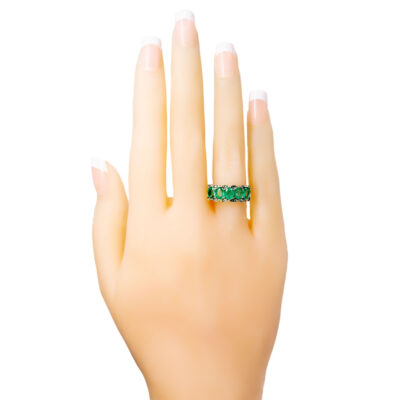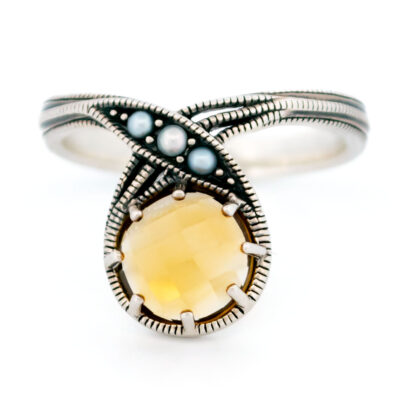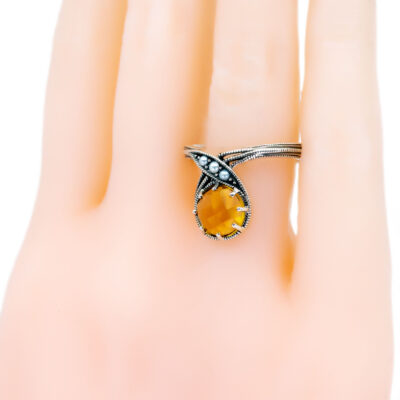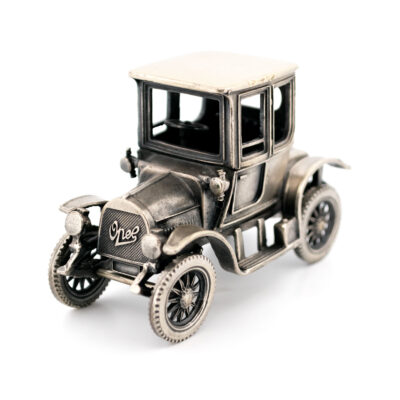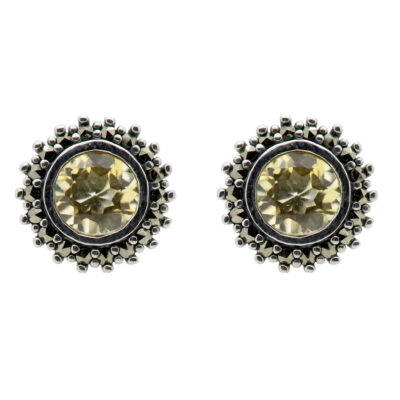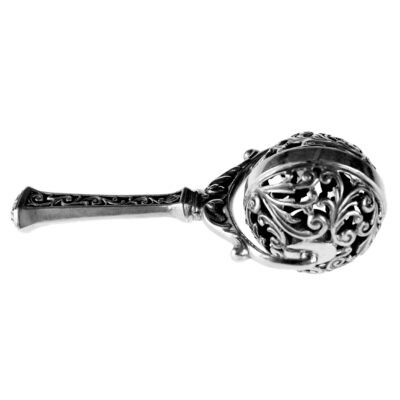This remarkable antique Arts & Crafts sugar and cream set is made of sterling 925′ silver, crafted by William Hutton & Sons of Sheffield in 1911. This set is a stunning example of the Arts and Crafts style. Perfect for any collector, this set is sure to add a touch of sophistication to any collection.
Videos
Details: Silver Condiments.
Design Era: Antique.
Dimensions: H 7.5 x L 14.5 cm.
Weight in grams: 354.
Condition: Very good condition – slightly used with small signs of wear.
Shipping and Pickup: This remarkable piece ships from our store located in the center of Amsterdam, The Netherlands. We offer both registered shipping and local pickup at our store. In the case of local pickup, any applicable shipping costs will be refunded.
About Us: Add some sparkle to your style with Binenbaum.com. We offer a stunning selection of antique and vintage jewelry that you won’t find anywhere else. From timeless rings and dazzling necklaces to unique brooches, we have something for every taste and occasion. Visit our website today and treat yourself to a piece of history.
| Design Era | |
|---|---|
| Design & Historical Context | The term "antique" refers to something that is more than 100 years old, and this includes jewelry that was created and used over several decades or eras. Antique jewelry can include pieces from a variety of different time periods, such as the Georgian, Victorian, Edwardian, and Art Deco periods. Each of these periods is characterized by its own unique style and artistic movements, and antique jewelry from these periods is often highly sought after by collectors and enthusiasts. Georgian jewelry, for example, is known for its intricate detailing and use of precious materials such as gold and diamonds, and is often influenced by the Baroque, Rococo, and Neoclassical styles. Victorian jewelry, on the other hand, is known for its intricate detailing and use of precious materials such as gold and diamonds, and is often influenced by the Romantic and Gothic styles. Edwardian jewelry is characterized by its delicate and intricate detailing, and is often influenced by the Art Nouveau, the Arts and Crafts movement, and the Belle Époque. Antique jewelry is often highly collectible and is valued for its unique style, craftsmanship, and historical significance. It can be found at antique shops, vintage stores, and online marketplaces. |
| Materials & Craftsmanship | Silver: The Metal of Elegance and Versatility Silver, known for its bright, reflective luster, is one of the most beloved and widely used precious metals in the world. This versatile metal has been cherished for thousands of years, not only for its beauty but also for its malleability, making it ideal for crafting intricate and delicate jewelry designs. Historically, silver has been associated with the moon and considered a symbol of purity, clarity, and protection. Ancient civilizations, from the Egyptians to the Greeks and Romans, valued silver for its beauty and used it to create coins, jewelry, and religious artifacts. In many cultures, silver is also believed to have healing properties, often used in amulets and talismans to ward off negative energy. In modern jewelry, silver is prized for its affordability, versatility, and timeless appeal. Sterling silver, an alloy of 92.5% pure silver and 7.5% other metals (usually copper), is the standard used in high-quality jewelry. Its durability and bright, reflective surface make it an excellent choice for a wide range of designs, from minimalist pieces to ornate creations. Silver can be polished to a high shine or given a matte, oxidized, or antiqued finish to suit various styles. Silver is more than just a metal; it is a symbol of elegance, flexibility, and understated luxury. Its enduring popularity and wide-ranging applications make it a staple in jewelry that can complement any look, from casual to formal, with timeless grace. |
| Dimensions | H 7.5 x L 14.5 cm |
| Gender | |
| Weight (in grams) | 354 |
| Condition | Very good condition – slightly used with small signs of wear |
By following these tips, you can enjoy your precious jewelry for many years to come.
Related Products
-
Silver Victorian Condiments 5262-2305
€ 895,00 VAT incl. (where applicable) -
Enamel Silver Salt Cellar And Condiment Bowl Condiments 3451-2023
€ 495,00 VAT incl. (where applicable) -
Diamond Emerald Silver 9k Row Ring 17925-9333
€ 1.395,00 VAT incl. (where applicable) -
Citrine Pearl Silver Crossover Ring 17354-1550
€ 175,00 VAT incl. (where applicable) -
Silver “Opel Oldtimer” Miniature 17508-3229
€ 1.195,00 VAT incl. (where applicable) -
Citrine Marcasite (Pyrite) Silver Stud Earrings 17149-2870
€ 125,00 VAT incl. (where applicable) -
Marcasite (Pyrite) Pearl Silver Drop Earrings 17159-2880
€ 125,00 VAT incl. (where applicable) -
925′ Silver Filigree Rattle 17170-3200
€ 315,00 VAT incl. (where applicable)
- Home
- Collection
- Fine Jewelry
- Silver Jewelry
- Silverware
- Boxes
- Candlesticks
- Salt and pepper shakers
- Miniatures
- Salt cellars
- Spoon Set
- Condiments
- Frames
- Napkin Ring
- Spoon
- Oddities
- Cups
- Vases
- Cutlery
- Serving Spoon And Cake Server
- Candlesticks
- Baskets
- Hanukkiah
- Spice Tower
- Yad
- Tea Set
- Sugar Castor
- Napkin Rings
- Wine Bottle Coaster
- Wine Stopper
- Tea Pot
- Jugs
- Rattles
- Hip Flask
- Miscellaneous
- Rings 💍
- About
- Contact
- No products in the cart.





